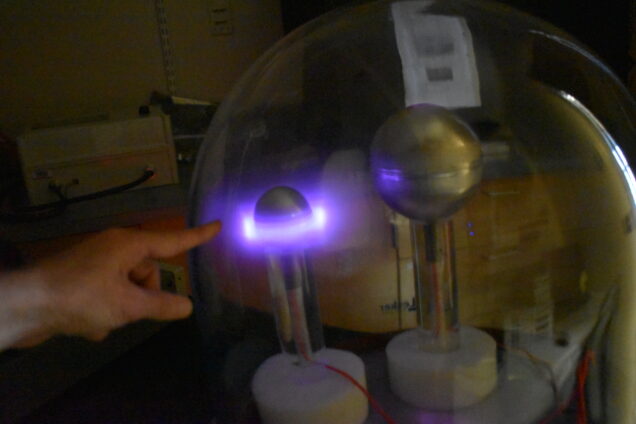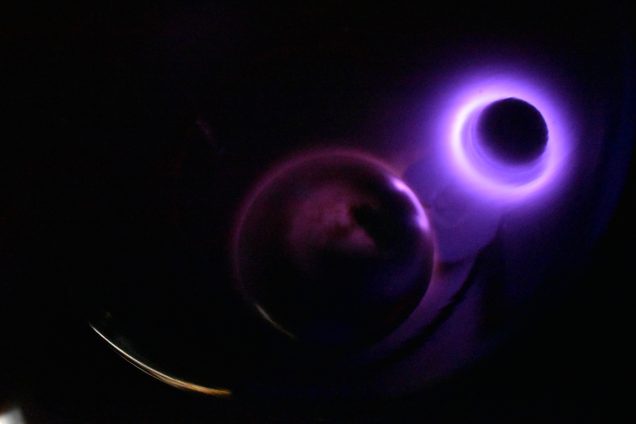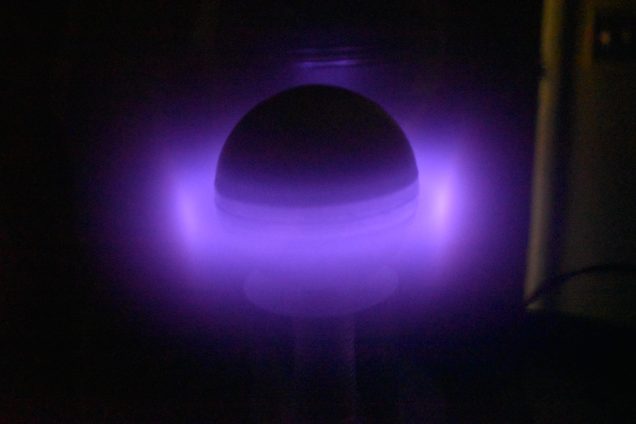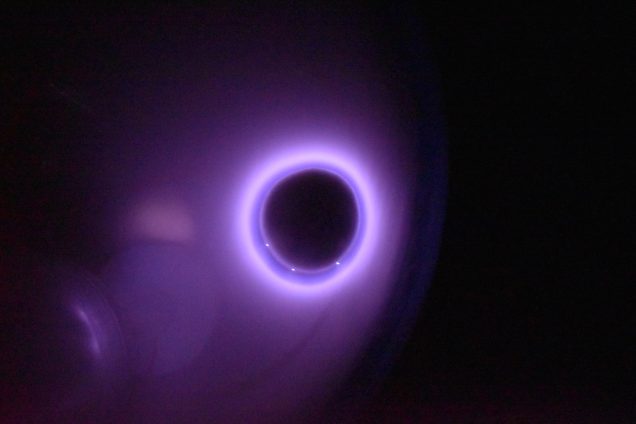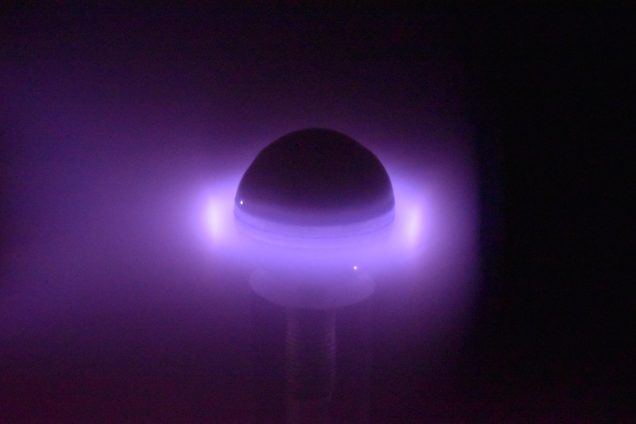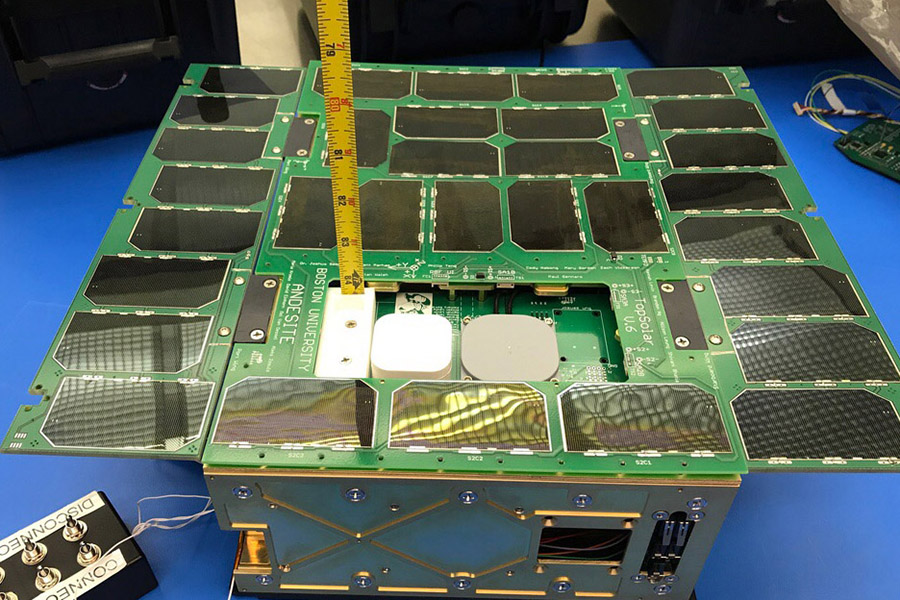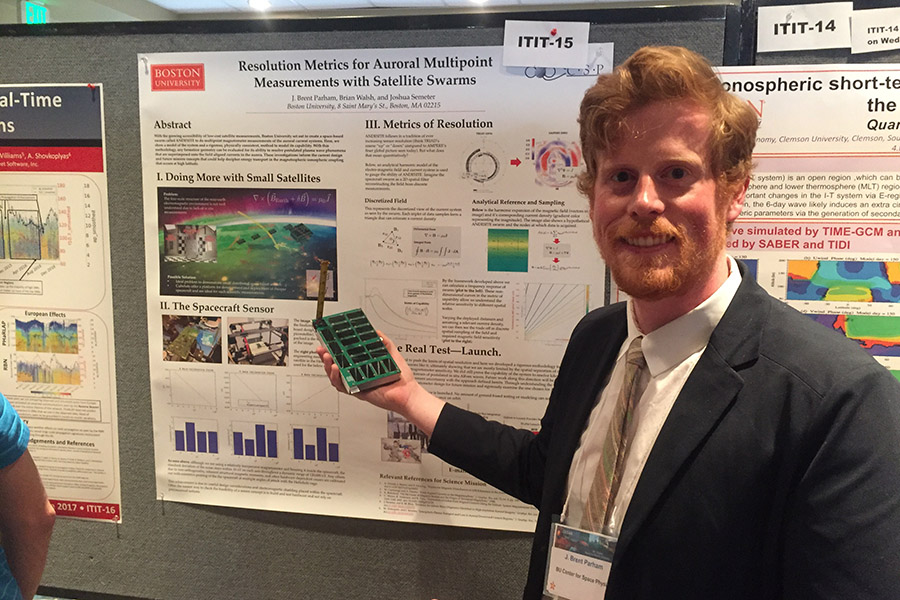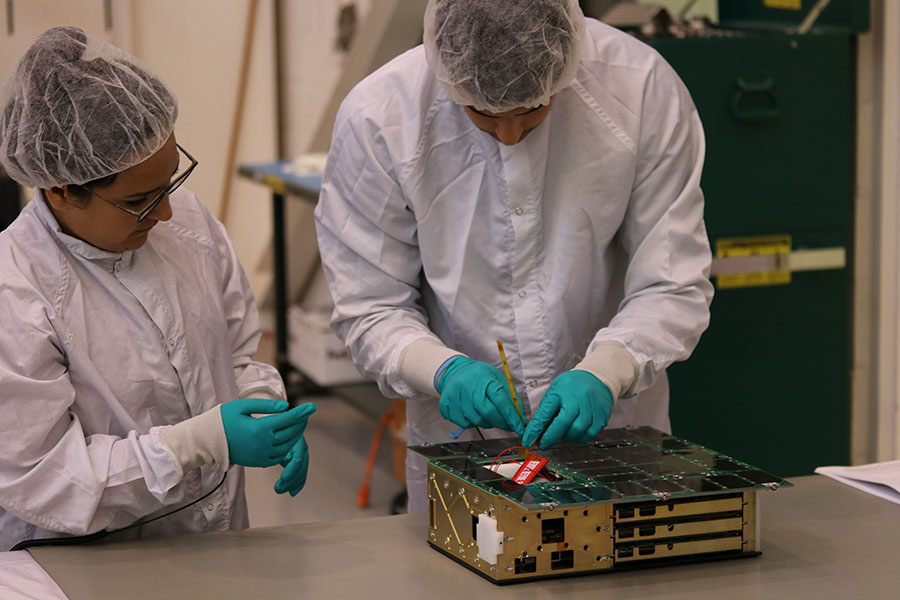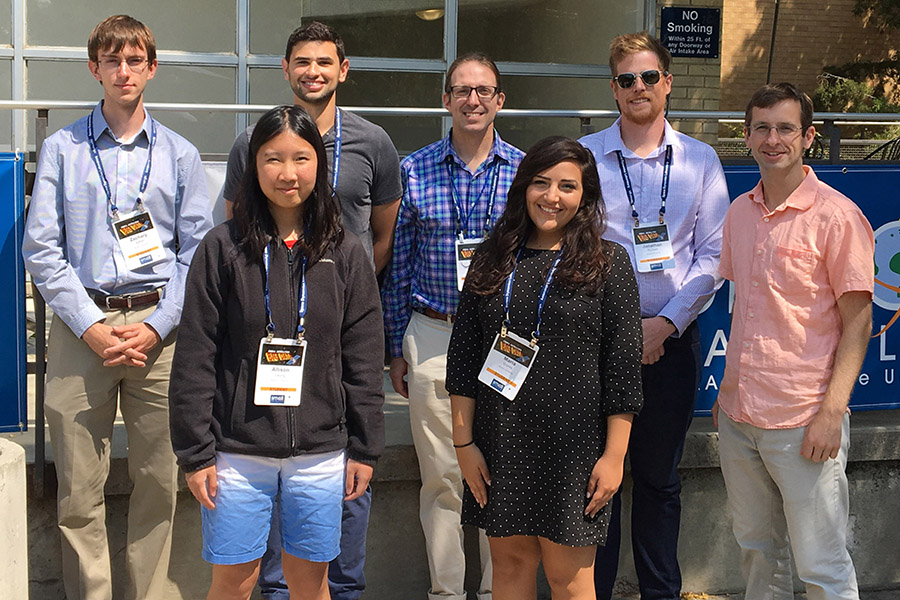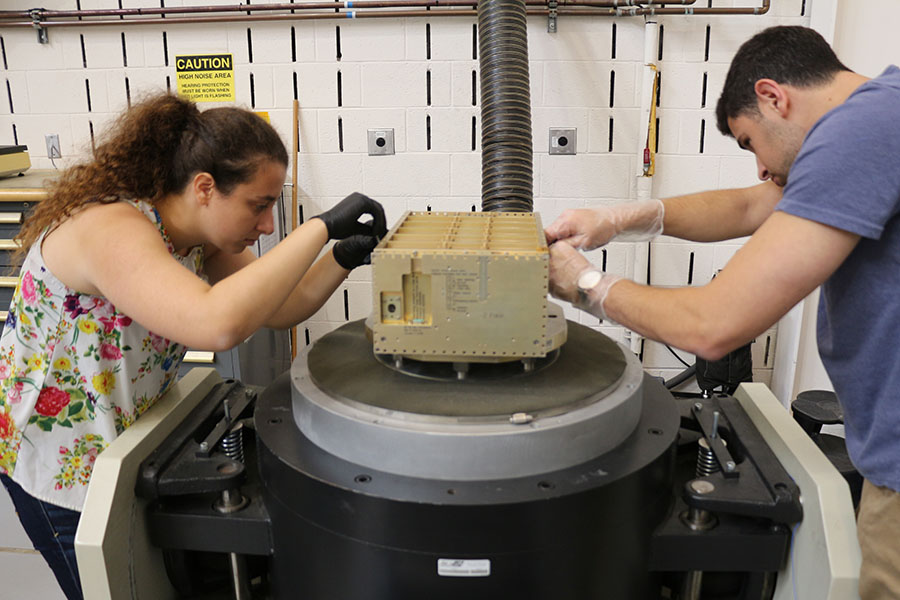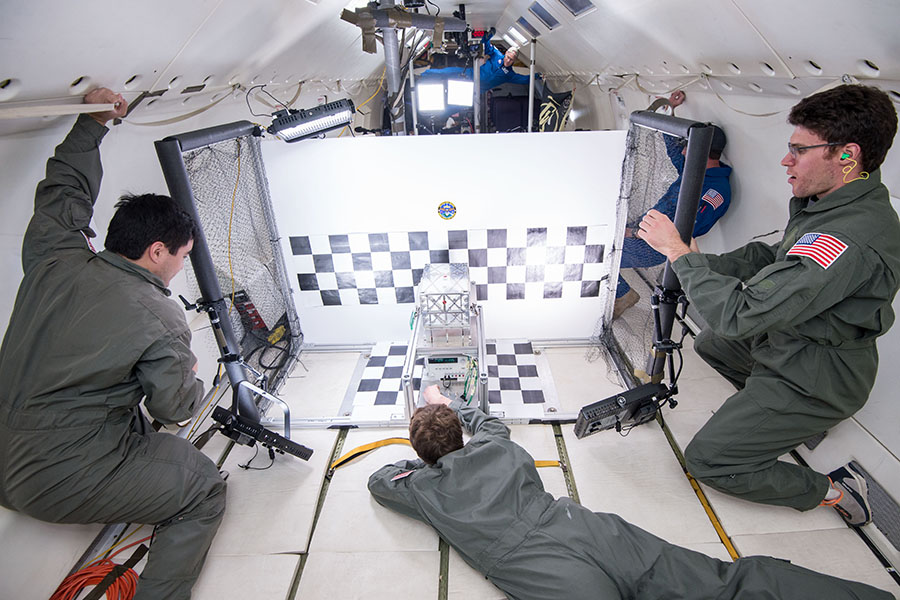Education
Science and engineering education at all levels is a strong element of the lab’s mission.
Plasma in a Jar
With the generous support of BU’s Center for Space Physics and the National Science Foundation (NSF) the team has developed a Planeterrella to show the glowing light of a plasma in a jar. Although 99% of the observable universe is in a plasma state, it’s rarely observed visually. BU’s Planeterrella is used for demonstrations throughout campus and within the community.
The violet glow comes from collisions of the plasma with the depleted air in the bell jar. Inside the bell jar a vacuum pump reduces the air pressure to roughly 1/10,000 that of atmospheric pressure. Inside are two metallic sphere’s containing strong permanent magnets. Once the pressure in the jar is lowered, a strong electric field is applied across the metallic spheres. This electric field causes electrons to be ripped off from one sphere (ionized) and accelerated towards the other. Although the bell jar is pumped down to vacuum, some neutral atoms from the air still remain inside, and when the electron collies with the neutral, light is emitted. The plasma interacts with the magnetic field of the sphere in a similar way as to charged particles in the Earth’s magnetic field. This ring of plasma in the jar is similar to the trapped charged particles in the Earth’s radiation belts.
This physical process is the same one that generates the aurora near the northern and southern poles. The Planeterrella at BU is based off of a design conceived by Dr. Jean Lilensten of the Planetary and Astrophysical Institute of Grenoble in France. The work is made possible by the NSF award AGS-1845151.
ANDESITE CubeSat
The ANDESITE spacecraft is a 6U Cube-Satellite, weighing roughly 15 lbs and the size of a shoe-box. The mission was designed and developed by undergraduate and graduate students at BU between 2015 and 2020. The mission was launched into orbit from New Zealand in June 2020 and is operated from campus.
The spacecraft’s science objective is to study filamentary currents in the auroral regions over the Earth’s poles. This is accomplished through deploying 6 node-satellites from the mule spacecraft and forming a mesh network with inter-spacecraft separations of 10s to hundreds of meters. Each spacecraft carries a single three axis magnetometer. When combined the measurements provide a measure of the magnetic field gradient and local current.
The project engaged more than 150 students spanning colleges and departments at BU and was supported by the US Air Force UNP program, the NSF, and BU. The program was co-advised by Brian Walsh (ME), Josh Semeter (ECE), and Aleks Zosuls (BME).

